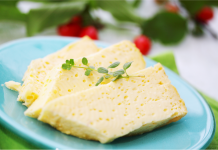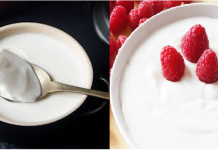Fasting is already not an easy thing to do on its own. Add the hot, tropical weather to that, and it is agony, especially if done in an unplanned and unsystematic manner. And Ramadan falls during the hottest season of the year; days are warmer and longer! That means extra preparation, and knowing what to eat during non-fasting hours is essential to good health and endurance during the entire month. Everyone needs nutritionally balanced food daily, and even more so during long hours of fasting. The following are a few tips to carefully plan healthy eating as you observe Ramadan:
Go Wholesome
Foods like white bread, white rice, and white sugar are processed foods which means they contain very little or no nutrients at all. White bread, for instance, is prepared from white flour which is processed and it’s nutrients are stripped off it. Choose wholefoods like brown bread, brown rice, and brown sugar instead because your body needs all the nutrients it can get to break the day-long fast.
When you are having your carbohydrates, be sure to pair them with protein-rich foods like beans, meat or eggs to balance the meal.

Go Organic
Although junk and ready-to-eat foods are more convenient, they’re usually filled with unhealthy ingredients like high-fructose corn syrup, MSG, and heart-clogging oils. There are healthier options and just as quick to prepare! Shop for fresh vegetables and fruits; wholesome and packed with nutrition, they are actually more filling for a longer time than processed foods.

Go Natural
Of course, you need not forego the celebrations and not indulge in your favorite delicacies, especially at Iftar (evening meal for breaking fast), but opt for healthier ways of eating them. For instance, try baking instead of frying samosas and try to hold off on as many desserts as possible to avoid any sugar crashes later in the day. If you must have something sweet, use real honey or turbinado (a natural, sugarcane-based sugar) in your recipes, or eat fruits that are a bit more on the sweet side to satisfy the cravings of your sweet tooth.

Above all, don’t forget to hydrate your body with water and hydrating fruits and veggies when you’re not fasting. Avoid salty dishes because they leave you thirsty long after you’ve had your meal. Instead, prepare fresh juices and smoothies to prepare your body for the fasting period and not subject it to any weakness and dehydration.


 Traqade
Traqade































In addition to testing the player’s abilities, geometry dash meltdown evokes strong feelings through its rhythmic blend of noises and visuals.
Mice with hPepT1 overexpression in intestinal epithelial cells (transgenic [TG]) or PepT1
(PepT1-knockout [KO]) deletion have been used and CAC was induced by azoxymethane/dextran sodium sulfate.
It has been shown to inhibit the replication of influenza A virus in numerous cell strains and significantly decrease the viral titers within the lungs of infected
mice [3]. Moreover, it has been discovered to have exercise against the protozoan parasite Toxoplasma gondii, suggesting its potential as a model new anti-Toxoplasma drug [4].
The researchers concluded that BPC-157 is a “very secure anti-ulcer peptide.” The study suggests that
individuals might be succesful of use this peptide to
minimize back the damage that some chemotherapy medicine do to the digestive system.
The present examine discovered that both α and γ-MSH can suppress intracellular and systemic
inflammatory cues via the MC3R in airway epithelial cells challenged with both RSV or LPS.
This compliments work by Getting et al [27] which demonstrated a central position for MC3R in suppressing leucocyte mediated airway inflammation. KPV affords the benefit
that its actions do not seem like receptor mediated and its structure may be potentially modulated to improve its focusing on to one specific pathway
or one other.
Notably, peptides have the potential to enhance immune responses in the context of
tumor immunotherapy (Sun et al., 2018). KPV peptide therapy has proven numerous advantages
particularly in anti-inflammatory results, wound healing, and
antimicrobial properties. Analysis is exploring these advantages
and KPV could play a big position in therapeutic purposes for varied illnesses.
Its capacity to modulate immune responses and reduce irritation makes it
an excellent candidate for additional examine.
Research point out that KPV has considerably decreased
inflammation markers, reduced fecal blood by over 80%, inhibited weight reduction, and prevented deterioration in animal fashions of IBD.
Early indications suggest that it may be useful in treating neurodegenerative diseases, persistent ache,
and even certain forms of cancer due to its anti-inflammatory and immune-modulating properties.
Nevertheless, more scientific trials are essential to totally understand
its potential functions in these areas. What makes
the KPV peptide distinctive is its capability to modulate inflammatory pathways without causing immunosuppression. From soothing inflammatory bowel illness (IBD) and intestine issues to dashing
up wound therapeutic, it’s obtained your back.
At Therapeutic Well Being, we utilize many alternative peptide therapies to help sufferers achieve higher results from conditions
they might be affected by. Thymosin Alpha 1 (TA1)
is an artificial peptide derived from thymosin, a naturally
occurring protein in the thymus gland. Known for its powerful immune-boosting properties,
TA1 performs a crucial position in enhancing your physique’s capability to fight infections, regulate inflammation, and keep optimal well being.
KPV’s effects have been consistently shown in animal research, and it
has the potential to be a beautiful therapeutic strategy towards inflammatory bowel illness.
The Body Safety Compound assists the body within the restore
of tendons, muscle tissue, intestines, and bones – all the areas the
place so many individuals are dealing with persistent signs and never seeming to improve.
If you have a hard time with wound therapeutic, we will actually name
on this peptide for help and expect to be helped.
Peptides are quite a few and variable in chemical construction,
due to this fact their makes use of are wide-ranging.
It is believed that KPV can inhibit the pro-inflammatory response in most cancers cells which outcomes
in cancer cell dying. Dr. Holtorf, an skilled in peptide therapy, emphasised
the selective action of BPC-157 in his dialogue. He identified
the flawed analogy made by Huberman, who in contrast the peptide’s operate
to indiscriminate vascular development in tumors.
Furthermore, the tissue morphology of the ulcerated gingiva after utility of hydrogel was additionally nicely repaired by selling CK10 and PCNA expression. In addition, the inflammatory cytokines including IL-1β and TNF-α have been significantly inhibited
by %E hydrogel whereas IL-10 was up-regulated. %E hydrogel also had an anti-bacterial impact on MRSA-infected gingival ulcer wounds, which resulted
within the obvious inhibition of infiltration by inflammatory cells
into submucosal tissues. Conclusively, could also be a promising sensible utility for most cancers patients with chemotherapy-induced oral mucositis.
Research reveals KPV functions as an anti-inflammatory agent
by inhibiting NF-kappaB and MAP kinase pathways which are
key within the inflammatory response. By inactivating these inflammatory pathways, KPV
reduces the secretion of pro-inflammatory cytokines thus lowering irritation.
Consequently, TGF-β’s function in PCa cells is advanced, exhibiting tumor-inhibitory results in early
levels and tumor-promoting results in advanced phases, along with its immunosuppressive function (Collazo et al., 2014).
Due To This Fact, solely inhibiting the tumor-promoting actions of TGF-β may pose
challenges in reaching a therapeutic effect.
Cytokines play pivotal roles in orchestrating immune responses
and driving the progression of PCa (Mao et al., 2021).
Pro-inflammatory cytokines, such as IL-1β and IL-2, increase the
infiltration of cytotoxic T lymphocytes (Li and Ruffell, 2022).
Conversely, in CRPC, levels of anti-inflammatory
cytokines together with IL-4, IL-6, and IL-10 are elevated, whereas TNF-α and IL-17
upregulate PD-L1 expression, additional intensifying immunosuppression (Cheng et al., 2024).
Α-MSH was proven to elicit a plethora of anti-inflammatory and/or immuno-modulatory
effects in a wide range of animal fashions. Together With experimentally induced cutaneous vasculitis,
experimental psoriasis, experimental autoimmune encephalitis, allergic
contact dermatitis, allergic bronchiolitis and colitis”. Is a low FODMAP diet beneficial for sufferers with inflammatory bowel disease?
References:
git.manabo.org